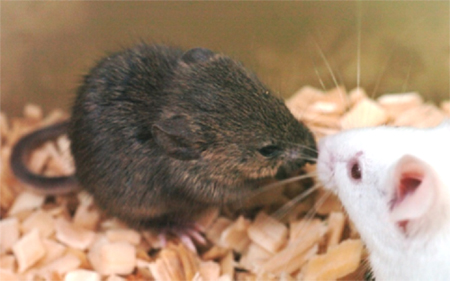| RIKEN Center for Developmental Biology (CDB) 2-2-3 Minatojima minamimachi, Chuo-ku, Kobe 650-0047, Japan |
November 4, 2008 – The cloning of animals by nuclear transfer has been shown in a wide range of species from laboratory standards such as mice and rats, to agriculturally important sheep, pigs, horses and cows. The cloning procedure typically involves extracting the nucleus from a somatic cell taken from one animal (the donor) and injecting into a fertilizing egg from which the nucleus has been removed. The ability of the oocyte to reprogram the transferred nucleus from a somatic to a totipotent state remains one of the great mysteries of cell and developmental biology. But the fact that cloning by somatic cell nuclear transfer remains a very low efficiency process has led many to believe that the integrity of the donor cells providing the genome may be critical to its success.
This wisdom has been turned on its head by a new study by Sayaka Wakayama and colleagues in the Laboratory for Genomic Reprogramming (Teruhiko Wakayama; Team Leader) in which they report the cloning using nuclear material from mice that had been dead and frozen for 16 years. Their report, published in the Proceedings for the National Academy of Sciences, showed the possibility of nuclear transfer using genomic material from cells that had been frozen at a relatively high temperature and without cryoprotectants, which has implications for species conservation and the possibility of “resurrecting” extinct species. The team began by confirming that tissues frozen for a week could be used as donors in cloning experiments, and found that, interestingly, brain cells yielded the highest efficiencies as genomic donors; higher, in fact, than seen in previous experiments that had used healthy, living cells. The researchers speculate that this may be due to the high levels of sugars in brain tissue, or denaturing, in which the genomic tightly packed genome comes slightly uncoiled. Wakayama tried next using samples from two male mice that had been frozen at -20° C for 16 years without any chemical protectants, but was unable to generate clones using the standard SCNT procedure. In addition to straight somatic cell nuclear transfer, a second strategy is available to cloners, in which SCNT is used to generate early stage embryos, which are allowed to develop to the blastocyst stage, by which point they have a small, internal clump of cells, known as the inner cell mass, which can be removed and cultured as embryonic stem (ES) cell colonies. These “ES by nuclear transfer” (ntES) cells can then be injected into other blastocysts and, through a process known as “tetraploid complementation,” giving rise to an individual in which nearly 100% of its nuclei carry the donor genome. The Wakayama team first determined that the 16-year old frozen tissue could serve as a donor source, establishing 46 ntES lines from brain cell nuclear material. Using these pluripotent cells, they created tetraploid embryos and allowed them to develop in surrogate mothers. This time, the process worked, producing four true clones and nine chimeras, as determined by genotype and coat color. Although one previous report had shown cloning from frozen material, those samples had been stored at the much lower temperature of -80° C, and in the presence of agents that may have some cryoprotective effect. “This is the first time a mammal has been cloned from a sample stored at conditions reasonably close to what might be expected in permafrost, making which gives some hope for those who might seek to clone extinct species from frozen carcasses” says Wakayama. “The higher temperature also puts this approach more closely in the reach of people working in the field to preserve samples from rare or endangered species.”
|
||||||
|
||||||
 |
| Copyright (C) CENTER FOR DEVELOPMENTAL BIOLOGY All rights reserved. |
